Education in emergencies
Updated 19 February 2024

A student at School Number 18 in Chernihiv, northern Ukraine, destroyed during the early phase of the conflict. Credit: GPE/Dmytro Maksymenko.
Wars and disasters impact 224 million children around the world, making it difficult for them to receive a decent education [footnote 1]. Seventy-two million of these children cannot access education at all. More than half of these are girls and over 12 million have a disability.
Programme case study: Alisha, Girls’ education in South Sudan
In South Sudan, the ongoing humanitarian crisis means that more than half of South Sudan’s school-aged population are out of school. The Girls’ Education South Sudan programme, provided by the UK in partnership with Canada, the European Union and USAID, is working to change this. The programme has now reached over 1 million girls with cash transfers, helping them to enrol in school and complete their secondary education.
Alisha, 19-years-old, is one of the girls supported by the programme. She had her leg amputated as a young child after being hit by a stray bullet. Alisha was considering dropping out of school after being teased by other children and due to difficulties using the school’s bathroom facilities.
Through cash transfers provided by the Girls’ Education South Sudan programme, she was able to buy a basin, a stool, period products and books. These simple items have been the difference between dropping out of school and completing education. The programme is also training school management bodies on how to make their schools more inclusive for children with disabilities. Alisha is appealing for continued support to help other girls with disabilities to stay in school.
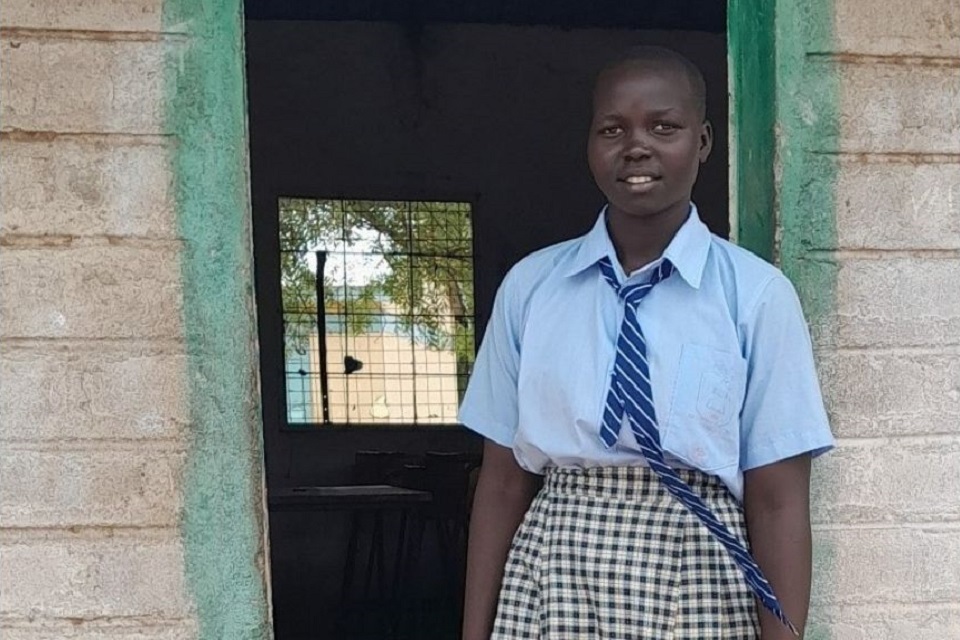
Alisha at school in South Sudan. Credit: Girls’ Education South Sudan.

Staff and students supported by the Girls’ Education South Sudan programme. Credit: Girls’ Education South Sudan.
Conflict zones
The UK’s Syria Education Programme is also called Manahel, meaning ‘Fountains’ and standing for fountains of hope, knowledge and life. Chemonics UK delivers the programme, providing children affected by conflict with quality and inclusive education in Northwest Syria. Children do not stop wanting to go to school when there is fighting outside, and school provides a safe space for them. In 2021, more than 1 in 6 children lived in a conflict zone. [footnote 2]
Education helps to create a sense of normality for girls and boys living in warzones. Education is also important for long-term peace and conflict resolution. When women meaningfully participate in peace processes, the resulting agreement is 64% less likely to fail [footnote 3] and 35% more likely to last at least 15 years [footnote 4].

Demonstrating the impact of women participating in peace processes.
Case study: Manahel programme in Syria
Watch Syrian schoolchildren supported by the UK’s Manahel programme tell the UK government what education means to them (video):
Syrian schoolchildren supported by the Manahel education programme (YouTube)
Refugee education
Refugees and displaced children are the largest group of those marginalised children who are out of school, and their number is increasing. Twenty-seven million children in conflict-affected countries receive no education at all, which severely limits their long-term health and livelihood opportunities.
Girls are more likely to be out of school during emergencies. Without the protection that schooling affords, they are at high risk of experiencing gender-based violence, including sexual violence. A UK-funded research report on what works to prevent sexual violence in conflict shows that violence can be reduced with interventions designed to tackle social norms and risk factors. It also shows that, even during conflicts, women and girls are most at risk from their partners.
In Bangladesh, UK funding to the global education funds – the Global Partnership for Education and Education Cannot Wait – is supporting the Rohingya refugees. In 2017, escalating violence caused many Rohingya people to leave Myanmar and flee to Bangladesh. Their journey was long, difficult and dangerous; and Rohingya refugees continued to arrive in the camps in Cox’s Bazar, Bangladesh, for several months. Cox’s Bazar is now the largest refugee settlement in the world. Over half of the estimated 965,000 refugees there are children.
Case study: Education Cannot Wait
Education Cannot Wait, in collaboration with other partners including UNICEF, is helping children like Sadia. Ten-year-old Sadia could not attend school regularly in Myanmar because the conflict made it unsafe. She suffered severe stress and anxiety since she fled her home and sought safety in Cox’s Bazar in 2017.
Though she is in a better place now and has received psycho-social support, Sadia misses her home.
I am really happy that I can continue my education here. I also encourage all my friends in my neighbourhood to attend learning centres. It will help us in the future.

Sadia writing at school. Credit: UNICEF Bangladesh/2020/Himu.
In Jordan, the UK and other donors are supporting Syrian refugee children and vulnerable Jordanian children through the Accelerated Access Initiative. This is part of our Building Resilience, Inclusion and Diversity through Girls’ Education (BRIDGE) programme.
Case study: Sahar, Accelerating Access to Education Initiative in Jordan
This year the Accelerating Access to Education Initiative in Jordan has supported around 151,668 Syrian refugee children and 3,790 refugee children of other nationalities to access a decent education. The pilot programme in 60 schools (which 12-year-old Sahar participated in) is supporting an additional 2,013 children with disabilities and learning difficulties. This includes girls like Sahar, who has low cognitive abilities and limited speech, and found expressing herself difficult.
The pilot programme has helped Sahar through a personal intervention plan. She now enjoys school after working with a speech therapist and being supported to join extracurricular activities to increase her self-confidence.
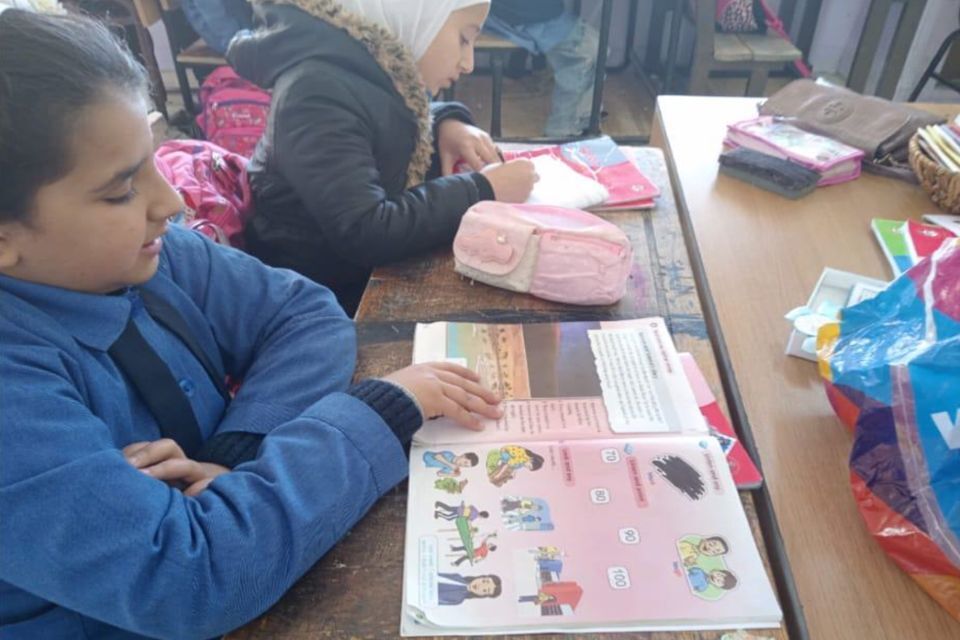
Sahar reading in school. Credit: Ministry of Education, Jordan.
Climate and environmental change
Climate and environmental change is disrupting the education of 40 million children each year [footnote 5]. The Young Lives research programme is managed by the FCDO Education, Gender and Inclusion Research Team. It revealed that childhood exposure to climate shocks like droughts and floods can affect a child’s nutrition, growth, cognitive skills and access to education.[footnote 6]
Whilst education can be impacted negatively by climate and environmental change, it is also part of the solution. Quality education builds the resilience of girls and their communities, reducing vulnerability to death from weather-related disasters. It helps girls not only to survive but thrive in our changing world, as educated girls cope better with the challenges of the climate crisis and to lead change to help address it. The UK is working to address the climate, environment and biodiversity crises in and through girls’ education. Girls’ education has been identified as the most important socioeconomic determinant in reducing vulnerability to climate change.[footnote 7]
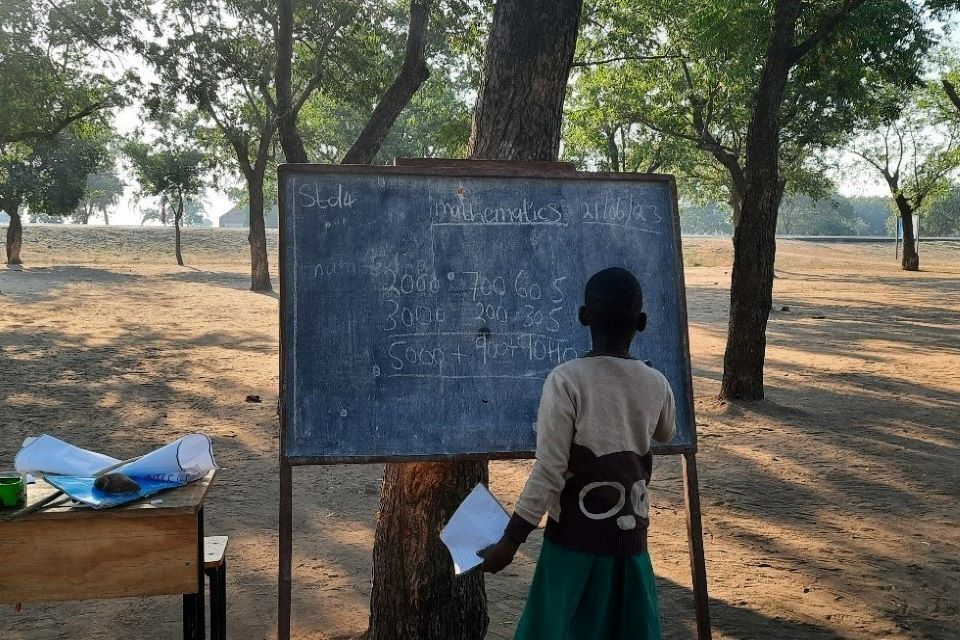
A girl in Chikwawa, Malawi, one of the districts worst affected by Cyclone Freddy learns outside due to lack of classrooms. Credit: National Numeracy Programme, Malawi.
Case study: Nadia, Pakistan (DARE programme)
Following Pakistan’s devastating floods in 2022, more than 3.5 million children were out of school for an average of 7 weeks. While this is a relatively short period of closure, evidence from UK-funded research finds that, without remedial efforts, learning losses increased even after children return to school. For instance, after just a 4-week closure of schools during Pakistan’s 2005 earthquake, children were 1.5 academic years behind 4 years later.
Nadia is one of 65,000 children supported by the UK and Government of Sindh in Pakistan. Nadia joined the UK’s Teaching at the Right Level project in Pakistan as a fourth grader (equivalent of UK Year 5). She was unable to recognise even simple words in her local language. But she was determined to learn to read and write, and through hard work and commitment, she has become one of the top performers in her class. Nadia now enjoys reading for her class and writing her own stories.
When asked about her favourite part of the day, Nadia proudly recounted her lessons in mathematics and writing. Her teacher shared that Nadia’s performance had exceeded all expectations during the midpoint assessment and her potential is limitless. In just 60 days, the percentage of children in Nadia’s class able to read a story increased from 9% to 67%.
Inspired by her own teacher, Nadia now aims to become a teacher herself.
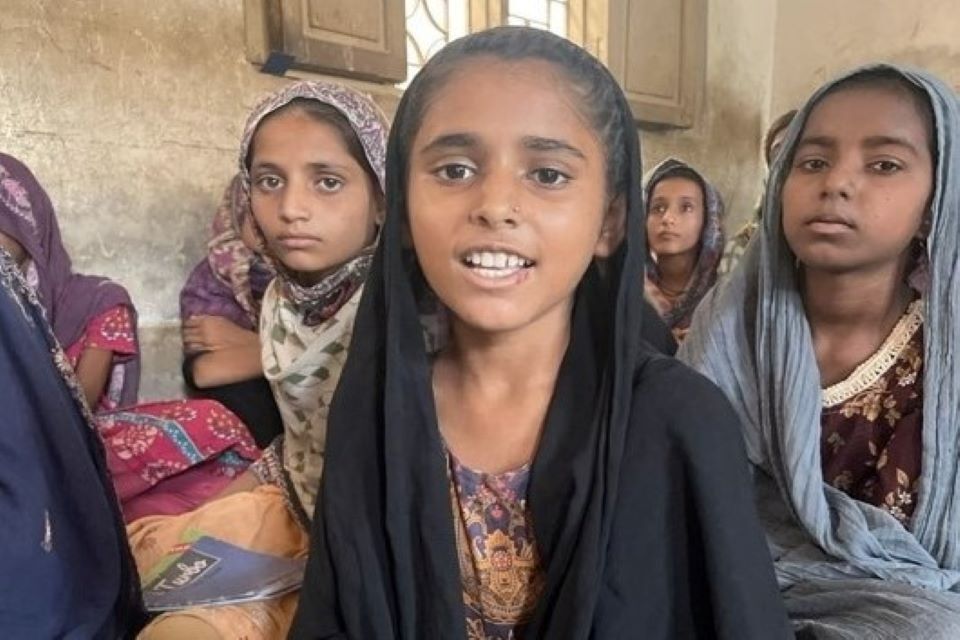
Nadia in school. Credit: ITA Pakistan.
Support to Ukraine
As a leading donor to the Global Partnership for Education (GPE), the UK government supported the emergency response to help Ukrainian children and youth impacted by the ongoing war. GPE has match-funded over $25 million of cash and in-kind contributions from Microsoft, Google and UNESCO, leading to a total of over $51 million for Ukraine. UNICEF and UNESCO are providing programmes to support teachers, students, school psychologists, parents and caregivers, and government officials to continue providing education in areas affected by conflict.
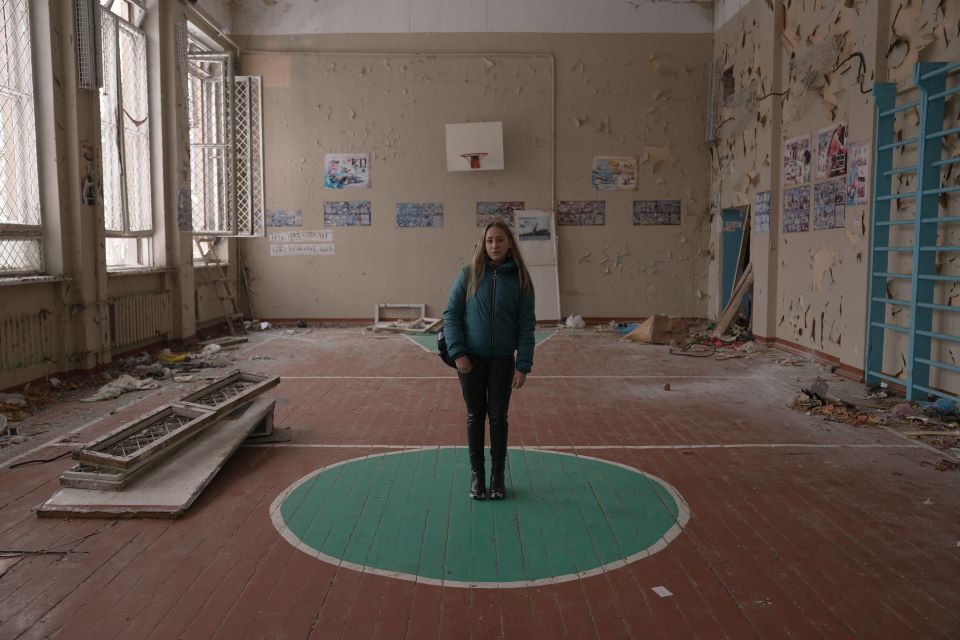
Khrystyna Ivashchenko, 8th grade student, in the gym of the destroyed School No. 18 in the city of Chernihiv, northern Ukraine. Credit: GPE/Dmytro Maksymenko.
-
New estimation confirms out-of-school population is growing in sub-Saharan Africa (unesco.org) (Accessed 11 July 2023) ↩
-
Stop the War on Children (savethechildren.org) (Accessed 11 July 2023) ↩
-
Anchoring the Peace: Civil Society Actors in Peace Accords and Durable Peace (Accessed 11 July 2023) ↩
-
Reimagining Peacemaking: Women’s Roles in Peace Processes (PDF, 1.2 MB) (Accessed 11 July 2023) ↩
-
Safe Schools: The Hidden Crisis (PDF, 3.8 MB) (Accessed 11 July 2023) ↩
-
Education is under threat from climate change - especially for women and girls Young Lives ↩
-
Is Education a Key to Reducing Vulnerability to Natural Disasters and hence Unavoidable Climate Change? (Accessed 11 July 2023) ↩
